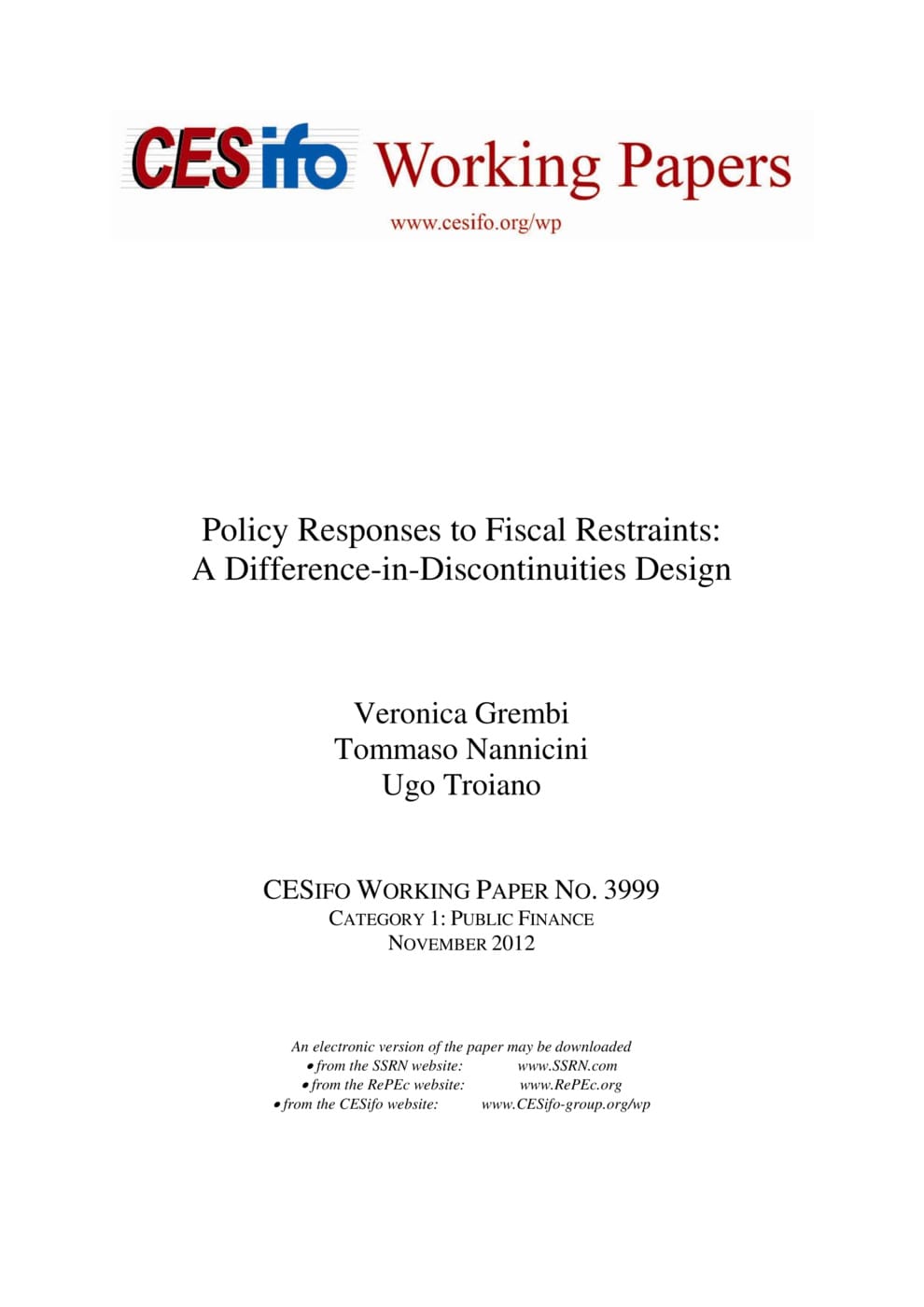Policy Responses to Fiscal Restraints: A Difference-in-Discontinuities Design
CESifo, Munich, 2012
CESifo Working Paper No. 3999

We evaluate the effect of relaxing fiscal rules on policy outcomes applying a quasi-experimental research design. In 1999, the Italian central government introduced fiscal rules aimed at imposing fiscal discipline on municipal governments, and in 2001 the rules were relaxed for municipalities below 5,000 inhabitants. This institutional change allows us to implement a “difference-in-discontinuities” design by combining the before/after with the discontinuous policy variation. Our estimates show that relaxing fiscal rules triggers a substantial deficit bias, captured by a shift from a balanced budget to a deficit that amounts to 2 percent of the total budget. The deficit comes primarily from reduced revenues as unconstrained municipalities have lower real estate and income tax rates. Finally, we investigate the heterogeneity in policy responses across municipalities to provide new evidence about the costs and benefits of restricting fiscal policy. The impact is larger if the mayor can run for reelection, the number of political parties seated in the city council is higher, voters are older, the performance of the mayor in providing public good is lower, and cities are characterized by historical deficit, consistently with models on the political economy of fiscal adjustment.
Public Finance
Public Choice